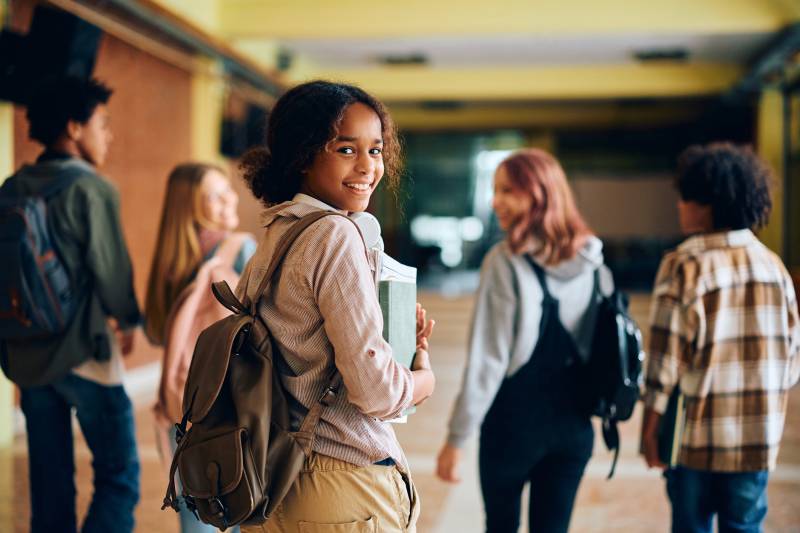Brooke Harris-Thomas developed self-confidence and an interest in math at an early age, thanks to encouragement from her dad, who was a math teacher. Those early education experiences not only shaped her as a young student but later in life as a special education teacher in math support and a researcher. Harris-Thomas, who is a postdoctoral research fellow at Purdue University, studies Black girlhood, math and belonging. She said that interpersonal relationships are important in affirming who you are and that belonging is not only a psychological experience, but a physical one too. Harris-Thomas’s lasting question is: “How do we let students’ interest drive us?” when creating places of belonging in schools.
Belonging matters at all ages, and especially as students enter middle and high school – times when their changing brains are acutely influenced by positive and negative emotions. Teens and tweens crave connection, and school is one of their primary sites for social interaction. According to Marketa Burnett, a developmental psychologist at University of Connecticut, cultivating belonging in an educational environment “needs to be an entire school effort.” Burnett’s work explores how educators and communities can support Black girls’ development holistically.
Curriculum, school policies, classroom design, interactions with teachers, and relationships with classmates can all add to or subtract from belonging in schools. When Black girls encounter bias in any of those domains, it can reduce their sense of belonging and hurt their academic identities. That’s why both Harris-Thomas and Burnett emphasized the need to listen to Black girls when assessing how to create belonging in a school setting. According to Harris-Thomas, this honors intersectional identities. In her survey research, Black girls in middle and high school said that seeing friends at school, teachers knowing their names, and getting opportunities to help peers and contribute to their school were all things that positively influenced their sense of belonging.
Why belonging matters and what gets in the way
According to Harris-Thomas, building interpersonal relationships in the school environment is essential to affirming students’ identities. Harris-Thomas is careful not to make generalizations about what will create belonging for all students of a certain identity. “Every Black girl is different,” she said. But there are some commonalities in the experiences that diminish belonging. “If I’m having a negative interaction with my peers, my teachers are not treating me very well, I don’t have that sense of closeness, my sense of belonging likely decreases in that space as well,” Harris-Thomas said. Because belonging is a basic human need as well as a psychological experience, when belonging is absent, it can weigh heavily on students’ cognitive load. “And wrestling with that takes cognitive resources away from [their] academics,” said Harris-Thomas. “It’s a lot to ask.”
According to Harris-Thomas, when Black girls receive negative messages based on preconceived stereotypes, particularly in the field of math, it can decrease their sense of belonging. When surveying Black girls in grades six to 12 about their school experiences, Burnett found that “they’re aware of racism, they’re aware of sexism, they’re aware of the fact that these things happen because [they are] Black girls.” The girls pointed out experiences that they’d had as early as elementary school. “They talked about stereotypes that were specific to being Black, but also stereotypes specific to being a Black girl,” said Burnett. The girls reported that they heard these stereotypes from their peers, classmates and teachers.
What educators can do
To begin thinking about how to cultivate belonging among students, Harris-Thomas said teachers can take a hard look at the school environment and messaging. She said it’s important that teachers ask Black girls what belonging means to them. Being able to access help from a teacher or from peers can contribute to creating those safe spaces. Such support acts as “a stepping stone to feeling that sense of competence, which sometimes hinder students from feeling belonging or not,” she said.


